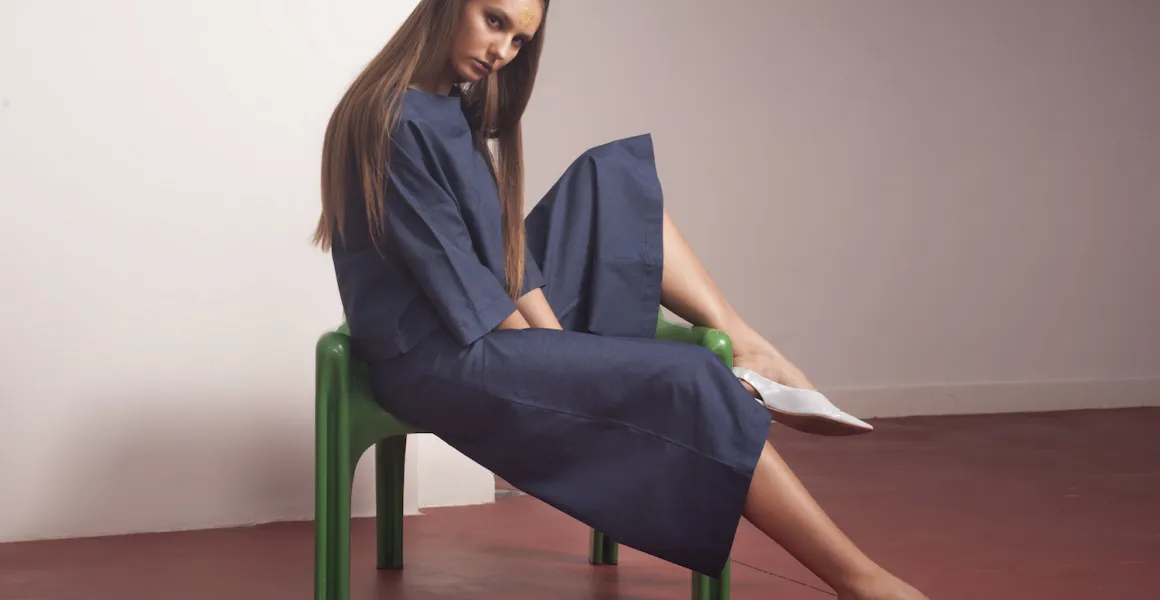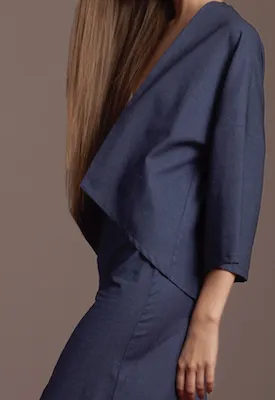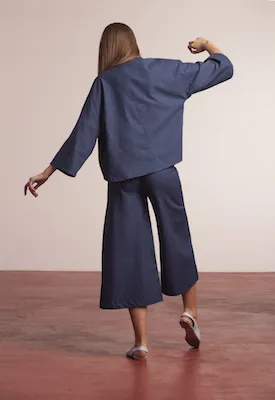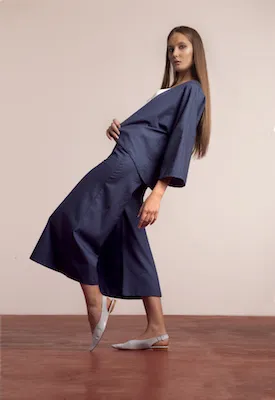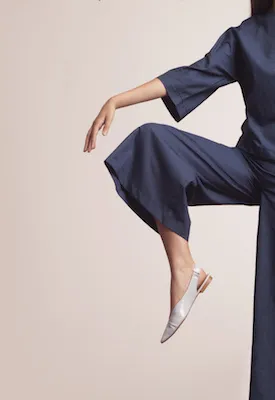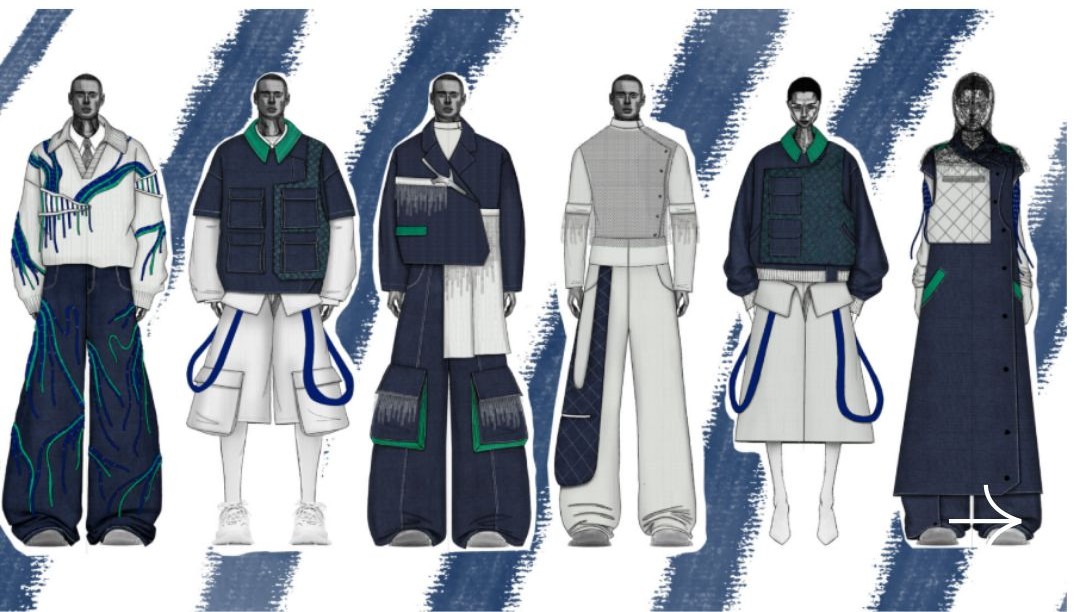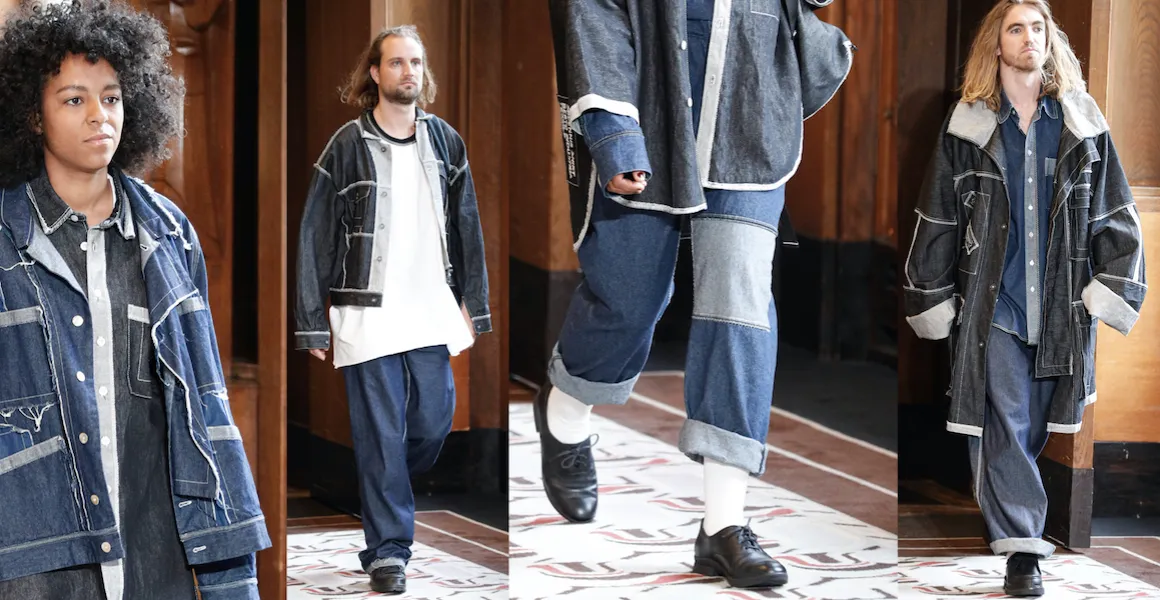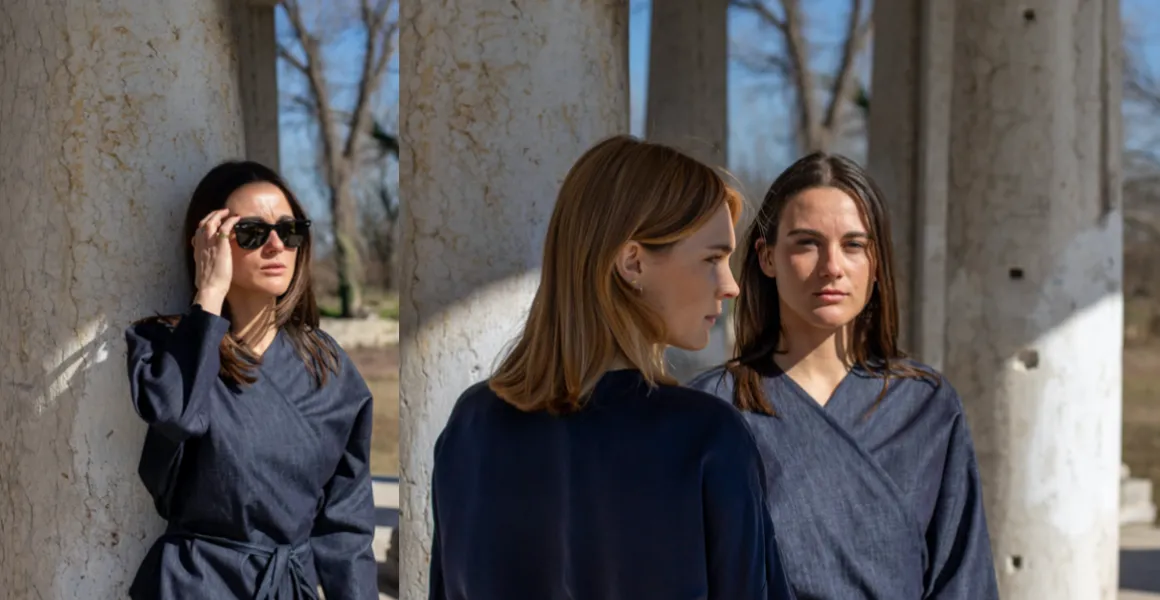What was your first project?
We began by studying the forms of a natural phenomenon called ‘calanchi’ – long, thin, and deep furrows created by water erosion, typical of clay soils. We studied and verified the natural modulations of these prodigies, translating them onto a series of outerwear, following the patterns accentuated by the human body, thus creating modular design on the human form. We accomplished this using organic fabrics, in that case using wool. We were already beginning our journey toward sustainable fashion, approaching all those natural, certified, organic fabrics or those derived from regeneration processes.
The creative process: do you work instinctively or plan every single step? Where do your ideas come from?
The creative phase is closely linked to logic and design. For us, there is no creativity without logic; every single step is thought out in a precise order aimed at developing a garment that is modular, designed to complement and harmonize with the shapes of the human body.
What did you think when Berto contacted you?
We are truly delighted to collaborate with a company like Berto, which contributes with sincerity and dedication to the cause of environmental sustainability in the textile field.
Which Berto fabrics have you worked with for your project and collections?
We used RECOVER BROKEN 45
What do you consider the most significant aspect of Berto for Talents? What goals have you been able to achieve through this program?
PINA is a small business focused on circular fashion. Berto has given us the opportunity to incorporate denim into our production – a fabric that typically represents one of the most polluting textiles. With Berto, it becomes, on the contrary, an example of environmental sustainability and elegance, enabling us to develop a line consistent with our standards of transparency, simplicity, and refinement.
“Less but better” can be seen as an endorsement of a certain degree of purity in design, but also in fashion design. It can also be understood as an environmental message about reduction and sustainability. What do you think?
We are certain that reducing and streamlining processes during the production phase can be crucial in reducing waste generated, as well as in the consumption of energy and tools that can thus cause pollution, always respecting the human factor, which is a priority for PINA.
Is there something you’ve never done that you’d like to accomplish?
Our objective, our dream, is to create a “factory of values,” to develop a system that provides the opportunity for everyone to grow in an equitable, healthy, and sustainable way. Our mission is aimed at creating a process where development, ethics, and respect for the environment move together pursuing the same objectives, with the sole purpose of social, cultural, and economic progress, not for the individual but for the community, through everyone’s work and attention. Always pursuing beauty and simplicity.
